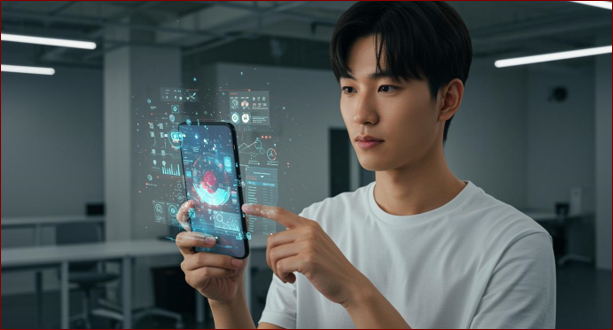Google unveiled Stitch this week at I/O 2025, an AI-powered tool that transforms text prompts and image sketches into functional UI designs and frontend code within minutes. Built on Gemini 2.5 Pro, the experimental tool addresses a persistent friction point in product development: the handoff between design and engineering teams.
Stitch generates visual interfaces from natural language descriptions and uploaded references like wireframes or screenshots. Users can specify design preferences including color palettes and user experience requirements, then export results directly to Figma or as HTML/CSS code for immediate implementation.
The tool creates multiple interface variants, allowing teams to experiment with different layouts and styles without manual recreation. Google positions Stitch as a solution for rapid prototyping, though its automatic code generation puts it in direct competition with Figma’s recently announced Make UI building app.
Where speed meets craft
For UX/UI designer Osman Gunes Cizmeci, Stitch represents both promise and caution. “The tool excels at scaffolding ideas quickly—getting from concept to clickable prototype in minutes rather than hours,” he says. “That acceleration is valuable for early exploration and client presentations.”
However, Cizmeci notes that speed alone doesn’t solve design’s deeper challenges. “Stitch can scaffold a layout, but it can’t capture why a button should feel heavy or align with brand voice,” he explains. “Those decisions require understanding context, user psychology, and brand personality—areas where human intuition still leads.”
The tension between efficiency and craftsmanship becomes apparent when examining Stitch’s output quality. While the tool generates functional interfaces, the results lack the nuanced decision-making that distinguishes thoughtful design from template application.
Reshaping designer-developer dynamics
Stitch’s ability to produce both visual designs and corresponding code could fundamentally alter how design and development teams collaborate. Traditional workflows often involve designers creating static mockups that developers interpret and implement, creating opportunities for miscommunication and design drift.
“When both teams work from the same generated assets, you eliminate the translation layer,” Cizmeci observes. “Developers get functional code immediately, while designers can iterate on the visual layer in Figma. That shared foundation could reduce the back-and-forth that typically delays product launches.”
This shift may require teams to reconsider role boundaries. Designers might focus more on refining AI-generated foundations rather than building from scratch, while developers could spend less time interpreting design specifications and more time on complex functionality.
The human element in automated design
Despite Stitch’s capabilities, Cizmeci emphasizes that certain design aspects remain distinctly human. “The tool handles layout and basic interaction patterns well, but struggles with emotional resonance,” he says. “Creating interfaces that feel intuitive, trustworthy, or delightful requires understanding user behavior patterns that go beyond visual arrangement.”
Brand consistency presents another challenge. While Stitch can incorporate specified color palettes and themes, it lacks the contextual awareness to maintain subtle brand expressions—the micro-interactions, typography relationships, and spatial decisions that create cohesive user experiences.
User research integration also remains limited. Stitch generates designs based on prompts and references, but can’t incorporate insights from user testing, behavioral analytics, or accessibility requirements that inform thoughtful design decisions.
Implications for design roles
As AI tools handle more routine UI generation, design roles may shift toward higher-level strategic thinking. Rather than creating individual screens, designers might focus on defining design systems, conducting user research, and ensuring AI-generated outputs align with user needs and business goals.
“Tools like Stitch could free designers from repetitive layout work,” Cizmeci suggests. “But that freedom only creates value if we channel that time toward deeper user understanding and more thoughtful problem-solving.”
The change parallels broader industry trends where AI automates technical execution while humans maintain creative direction. Success will likely depend on designers’ ability to leverage AI for efficiency while preserving the empathy and insight that drive meaningful user experiences.
A collaborative future
Stitch represents Google’s bet that AI can streamline the traditionally fragmented process of digital product creation. The tool’s integration with existing workflows through Figma export and code generation suggests a future where AI serves as a capable collaborator rather than a replacement.
For teams willing to adapt their processes, Stitch offers genuine time savings and iteration speed. The challenge lies in maintaining design quality and intentionality while embracing AI’s efficiency gains.
“Stitch is a useful collaborator—but humans still guide the design soul,” Cizmeci concludes. “The tool can generate layouts and code, but we decide whether those outputs create meaningful, accessible experiences that actually serve users.”
The success of tools like Stitch will ultimately depend not on their technical capabilities, but on how thoughtfully teams integrate them into human-centered design processes. Speed without purpose remains just speed.
DISCLAIMER – “Views Expressed Disclaimer: Views and opinions expressed are those of the authors and do not reflect the official position of any other author, agency, organization, employer or company, including NEO CYMED PUBLISHING LIMITED, which is the publishing company performing under the name Cyprus-Mail…more







Click here to change your cookie preferences